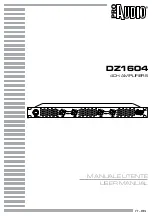
IC Replacement
Soldering Techniques:
OK, now that you removed the IC from the board, how do you
solder the replacement IC on the board? Here are some basic techniques for soldering a
replacement IC to the PC board. First, make sure the lands are CLEAN. That means
removing all solder and flux left behind during the IC extraction process. Next, check the
board to make sure the traces are not broken, cut or lifted. Place the new IC on the board
and position it so all of the pins are properly aligned (IC pin 1 to board land #1, etc.) on
the board. Once you have verified the traces are properly aligned, secure the new IC to
the board. One method to secure the IC is to use a piece of clear adhesive tape to hold the
IC to the board. Another method would be to apply pressure to the top of the IC using a
probe or tweezer to keep it in place while soldering it.
Secure the IC and solder.
Once the IC is secured, solder the corners of the IC first to hold the chip in place. If you
are using tape to secure the IC you can remove it once you have the corners soldered in
place. Add a bit of solder flux (liquid or paste) to the unsoldered pins and then solder the
remaining pins. Adding the flux allows the molten solder to adhere to the lands and IC
pins which will reduce the number of unreliable solder connections.
A good solder connection.
Next, check your work! Remove solder bridges between the IC’s pins with desoldering
braid and reflow any doubtful solder connections. You may want to use a magnifying
glass to help check your work.
Here are 10 basic steps to successfully soldering an IC (or any component):
1.
Make sure all parts are clean and free from dirt and grease.
2.
Secure the IC or component firmly to the board.
3.
"Tin" the iron tip with a small amount of solder.
4.
Clean the tip of the hot soldering iron on a damp sponge.
5.
You can add a tiny amount of fresh solder to the clean tip.
6.
Heat all parts of the joint with the iron for a second or so.
7.
Continue heating and apply sufficient rosin core solder to form a smooth joint.
8.
It only takes two or three seconds at most, to solder the average p c board joint.
9.
Do not move parts until the solder has cooled.
10.
Check you work for solder bridges and cold solder connections.
Summary of Contents for A-SV610PRO
Page 1: ......
Page 2: ......
Page 3: ......
Page 4: ......
Page 5: ......
Page 6: ......
Page 7: ......
Page 8: ......
Page 9: ......
Page 10: ......
Page 11: ......
Page 12: ......
Page 13: ......
Page 14: ......
Page 15: ......
Page 16: ......
Page 17: ......
Page 18: ......
Page 19: ......
Page 20: ......
Page 21: ......
Page 22: ......
Page 23: ......
Page 24: ......
Page 25: ......
Page 26: ......
Page 27: ......
Page 28: ......
Page 29: ......
Page 30: ......
Page 31: ......
Page 32: ......
Page 33: ......
Page 34: ......
Page 35: ......
Page 36: ......
Page 37: ......
Page 38: ......
Page 39: ......
Page 40: ......


































